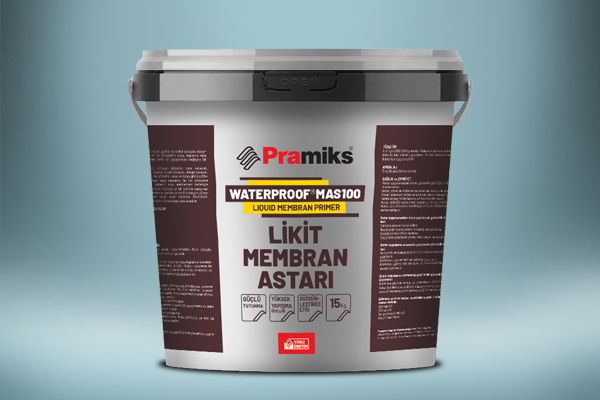Belgelerimiz

PRODUCTS
PRATECH® MAS100
Liquid Membrane Primer
Liquid membrane primer is a ready-to-use material obtained by specially mixing bitumen and water, applied before the liquid membrane application.
- Superior Adhesion
- Water Resistance
- Elasticity
- Easy Implementation
Details
Details
Technical Specifications
|
|
|
|---|---|
| Color | Component A (Powder) is gray, Component B (Liquid) is black |
| Powder Density | 1200 ± 100 kg/m³ |
| Liquid Density | 1 kg/L |
| Waiting Time Between Coats | 4-5 hours / 20°C |
| Application Methods | Brush, Roller, Air Spray Gun |
| Pot Life | Max. 2 hours |
| Time Before Use | Mechanical strength: 3 days Water impermeability: 7 days |
| Time Before Covering | 3 days |
| Consumption | Depending on the structure, roughness, and porosity of the applied surface, for each coat: 500-750 g/m² |
| Packaging | 24 Kg liquid (±2%) 8 Kg powder (±2%) |